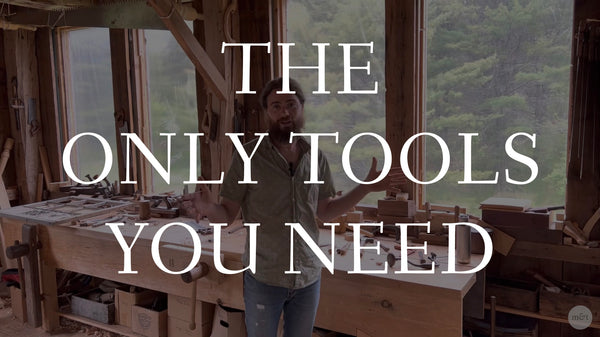Blog RSS
Everyone Made Their Own Tools
Because complex modern society is maintained only through specialization, most of us focus our career development in one narrow track. We develop skills in one area in order to get a job to make money to pay other specialists to make and repair our stuff. It is possible in the modern world to become a renowned expert in a particular discipline but be helpless in every other area of life. But it was not always this way. Before Americans turned to factory work in the 19th century, skilled tradesmen worked for the most part on their own or in small shops that offered diverse goods and services. Especially in rural settings, defining one’s occupation was tricky. Was humble Jack a...
A Timber Frame Built by High Schoolers
Justin Dietrich is an M&T reader and woodshop teacher in Lincoln, Illinois. Inspired by timber framer Rob Hughes and the CSF timber-frame project here in Maine, he decided to explore the possibility of working with his high-schoolers to design, build, and raise a timber frame in a local park. Dietrich was kind enough to share their experience with us. “I decided to use just my "Advanced Woods" students on this project, as these students had already taken my “Introduction to Woods” course where we build a picture frame, a box, an end grain cutting board, and turn a bowl on a lathe,” he said. “Right before our Christmas break (2021), we began prepping for the timber frame project.” After getting his...
Video: The Only Tools You Need
This final video in the “Setting Up Shop” video series brings it all together and shows you where we’re heading next. These old tools are not just for museums – they’re for making real shavings. Stay tuned.
A Heartfelt ‘Thank You’ & Hearty ‘Welcome’
(Image borrowed from Megan's LAP hiring announcement) As many of you know, this January our good friend and M&T copy editor, Megan Fitzpatrick, took a full-time position as editor at Lost Art Press. For years, Megan juggled many roles at any given time, doing editorial work for Popular Woodworking, Lost Art Press, EAIA’s The Chronicle, and M&T. Megan took me under her wing right out of the gate to show me the ropes as I was putting together Issue One. Without any of my own background in publishing, for those first few issues, she was the only “one who actually knew what she was doing” around here. I cannot tell you how many times Megan graciously guided me (and then...











